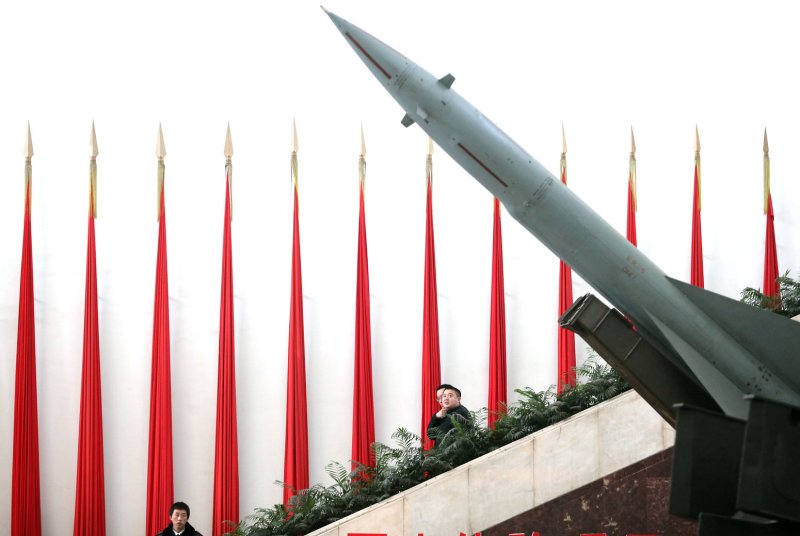Chinese tourists visit the People's Liberation Army's Military Museum, showcasing China's first nuclear intercontinental ballistic missile and captured American tanks from the Korean War, in Beijing. File photo. UPI/Stephen Shaver |
License Photo
BEIJING, Oct. 11 (UPI) -- While most of the world takes a step back from nuclear power in the wake of the disaster in northern Japan, China is continuing on a path of nuclear power expansion.
An earthquake and tsunami last spring wrecked a nuclear power plant at Fukushima, causing an environmental problem that is far from over.
That caused many countries -- notably Germany -- to stop nuclear power plant construction and even shut down existing facilities.
However, China still aims to have 50 gigawatts of nuclear power by 2015, Jiang Kejun, a director of the Energy Research Institute at the National Development and Reform Commission, told The New York Times.
With 26 reactors under construction, China accounts for about half of the nuclear reactors being built around the world, the World Nuclear Association says.
The activation in August of a 1-gigawatt nuclear unit at Ling Ao, about 37 miles north of Hong Kong, brings China's nuclear capacity to 11.878 gigawatts and the total number of active reactors to 14.
At the end of last year, China had 10.8 gigawatts of nuclear power.
While China hasn't set nuclear power construction targets for the government's next five-year plan, which concludes in 2020, Jiang told the Times said that target could end up being slightly lower than if the Fukushima disaster hadn't occurred.
Yet he and other Chinese officials maintain that nuclear power is essential for China because of its rapidly rising consumption of electricity.
China relies on coal for three-quarters of its electricity, making it the world's largest coal consumer.
Following the Fukushima disaster in Japan, China's existing reactors were allowed to continue operating during the country's safety review from March to July, and construction on new reactors begun before Fukushima was allowed to proceed.
Chinese regulators declared the country's existing nuclear reactors and those under construction safe, based on the safety review.
But work isn't allowed to proceed yet on new reactors -- approved before the Fukushima incident and for which construction hadn't started -- until the government completes a new round of safety studies.
Two reactors in Shidao in northeast China's Shandong province, for example, received government approval just days before the Fukushima disaster. Now the project is on hold until the government lifts this ban on new reactor construction.
China's top climate official last month said that nuclear power would remain an integral part of China's energy mix, with safety as a precondition, as the country aims to reduce greenhouse gas emissions.
"Currently and in the future, in a bid to control greenhouse gas emissions, China will rely chiefly on saving energy, enhancing energy efficiency, developing renewable energies and developing nuclear power on the premise of ensuring safety," said Xie Zhenhua, vice chairman of the National Development and Reform Commission.















